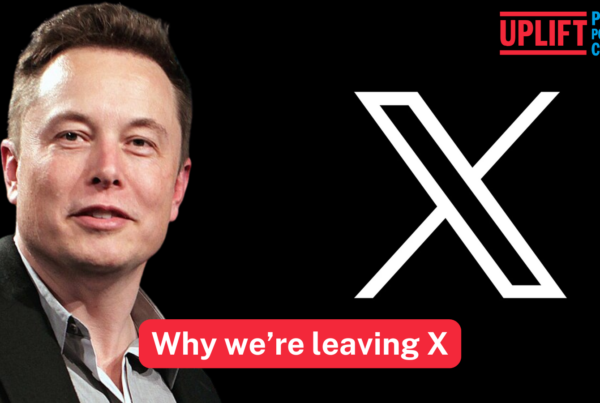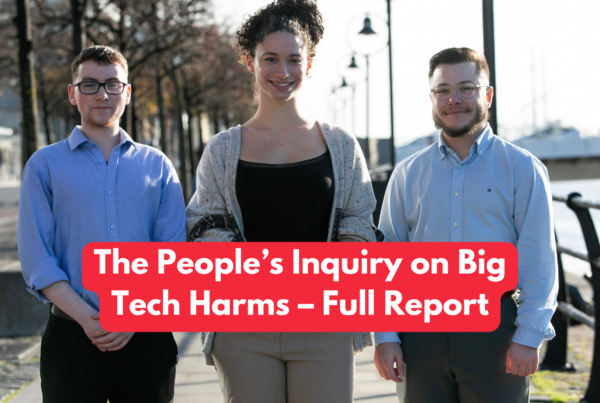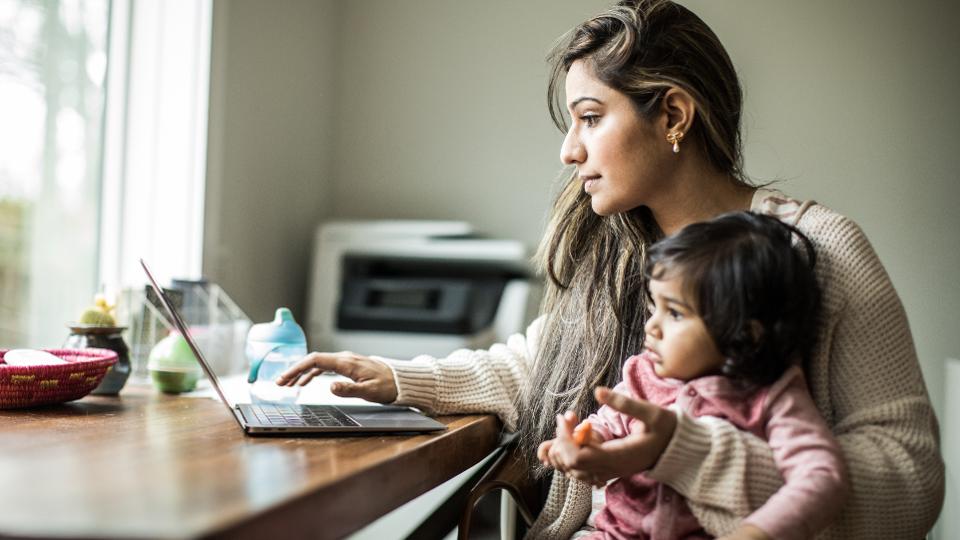
Two months in and many of us have realised what we love about working from home and what we miss about the office. For many, the opportunity of remote work as a result of Covid-19 was the welcome change we’ve always wanted. The reality is not always what we dreamed it would be – particularly with health concerns and/or homeschool thrown in the mix – but for most of us, hopefully, we’ve got into some sort of WFH (Working From Home) routine by now.
Here at Uplift, our team works mainly remotely right across the island of Ireland so over the past 8 weeks we have run webinars on working from home and shared some tips on how to get set up remote working for those of us who’ve been forced or advised to do so because of the Covid-19 outbreak.
We’ve become familiar with the frustrations of working from home: unreliable WiFi connections, extra distractions (laundry!) and missing things about the office: that special headset, big-screen computer, the good printer, banter with colleagues, the walk from the car/bus/train to the office.
Uplift’s training sessions have emphasised that good tech set up and effective team communication are the two most important things, as well as a positive attitude.
A note of caution on internet security. At the start of Covid-19 when tens of thousands more people started using Zoom, several security issues on the platform were exposed. Since then, Zoom has rolled out a number of measures to address these concerns which included ‘Zoombombing’, data collection & privacy. Ensure that you are using the latest version of Zoom and that users know how to use the privacy and security settings (this applies to all video conferencing software, not just Zoom). Keep up to date with changes with Zoom tutorials and live training: https://support.zoom.us/hc/en-us
Effective team communication is important for getting work done and keeping tabs on workers’ welfare. Perhaps someone working alone easily feels isolated and asks to set up a channel on Slack to post the songs they’re listening to at the moment (our team recently swapped book suggestions) or to share cool articles they’ve read this week with other team members, photos of pets/kids (not too many!). It’s the digital equivalent of a water cooler chat.
Or perhaps someone asks to mute all their notifications for a 3-hour block every two days, to really get that work done. In an office, it would be sneaking off to a cafe or an empty room (and we’ve all done that). The critical thing is they let people know.
Assuming the best of people and maintaining an open dialogue about work practices are critical ways you can build a healthy remote working culture.
USEFUL LINKS:
Working for Change from the Kitchen Table: Working Remotely
The coronavirus is putting the idea of remote working to a gigantic test – and at a totally unprecedented scale. Getting used to working at home can be daunting especially if you have not done it before. This blog is intended to share some of the processes and tools we use to help be as cohesive and effective a team as possible.
The Uplift team steward the huge Uplift community to take powerful, coordinated action on and offline. We live in different parts of Ireland – Kinsale and Schull in Co Cork, Cloughjordan in Co Tipp, Dublin and Belfast in Northern Ireland.
The backbone of our team communication system is Slack. Slack is essentially a chat room for your whole team. Imagine, no endless email threads! Files are shared, important information pinned, you can tag specific people you want to see your message and you can send private messages. Communication is organised in channels ie admin, comms, volunteers, specific campaigns, the Christmas party!
Slack keeps us easily connected with each other without it being cumbersome or awkward – sort of a cross between twitter and text chat! It’s an excellent way of bouncing off ideas, getting immediate feedback on something you are working on, sharing news – and ultimately countering that sense of isolation and demotivation that can creep in if left on your own for too long!
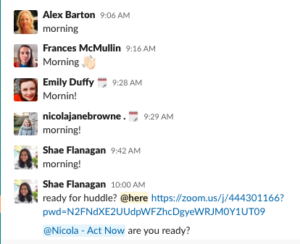
Every morning the entire team meet for about 20 minutes, called the ‘huddle’. Here we catch up and plan our day, who is doing what, is there anything happening we need to be aware of and what each of our priorities are for the day.
Asana is the project and task management tool we use to record decisions and tasks. Each task is allocated to someone on the team along with a time/date for completion. For a remote working team, it’s really important to be able to put decisions *somewhere* that enables transparency and accountability.
Our meetings are all facilitated by zoom – a video conferencing tool, similar to skype. It’s possible to add dozens of people to the call, you can join from your phone, create breakout rooms, record meetings, share screens, chat etc. One challenge is that having quality video conversations requires decent enough broadband.
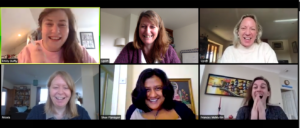
To make meetings work smoothly we use a few techniques including agreed hand signals. If the person speaking is saying something you agree with twinkly fingers indicate agreement. Holding up one finger on both hands indicates you have a direct point to make on the topic under discussion. For larger group meetings we create a ‘stack’ ie add your name or x in the chatbox to indicate that you want to say something.
Paying attention to process is important if everyone is to feel involved and supported to contribute to decision making in the team. Recognise that there are different participation styles. Some people like to talk, some people don’t! So building in a variety of ways of gathering peoples input is important. For example, we all work off the same meeting template [Google Docs] and for some very reflective discussions allow time for everyone to think on their own, record this in a shared document and then talk through what each of us has said.
Most of our regular meetings’ ie weekly team meeting, campaigns planning meeting, operations meeting have a format called a POP. P = purpose O = outcome P = process. A ‘rolling’ document is used to capture decisions and actions. This is a great way of keeping track of progress and for catching up on what you might have missed out on.
Each team member has a ‘check-in’ call with their line manager every week. This lasts an hour and is where team members reflect on work priorities, talk through whatever needs to be discussed, reflect on learning, and agree on priorities for the following week. Again this is all recorded in one doc that’s added to each week.
We rarely let a meeting go over an hour and always start at the agreed time. This is important as it establishes a culture and expectation about how we conduct ourselves. It’s really hard to concentrate longer than 50 minutes on a video call – also true for in-person meetings.
Something we’ve learnt over time is the importance of organising in-person meetings on a regular basis – if possible. We do this now between every 4 to 6 weeks. There is no doubt that face to face contact and communication cement relationships, allows for deep and creative thinking and drives momentum and team cohesion. It can be hard to achieve but is something we’ve decided to prioritise this year – because we’ve seen the benefit of it to our whole team.
All the documents we work on are created and stored in a shared Google Drive. This means there is only ever one draft of any document and if someone else is editing, proofing, commenting it’s contained in the one draft. Comments suggested edits etc can be accepted or rejected. There are protocols agreed about how this works for example only one person works on a document at the same time. Big edits are explained and ideally whoever is the drafter has a conversation with the person [via zoom] about what is being written so that both people are on the same page.
Google Calendar is the best way of letting everyone know where you are. The most difficult aspect of working in a different location is not being able to glance around and see who’s about. Each person’s calendar is visible to the entire team.
This blog will be updated as more people request information. We’re only delighted to share the team’s experience remote working – so get in touch. [email protected]
